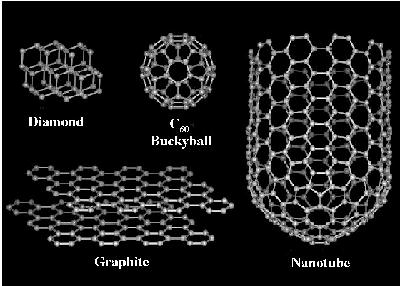
There was thought to be only two allotropes of carbon orignally:

Discovery:
Nanotubes are derived from a graphene carbon lattice (ie the same as
in graphite) and were discovered in 1991 by the Japanese electron microscopist
Sumio Iijima who was studying the material deposited on the cathode during
the arc-evaporation synthesis of
fullerenes.
Nanotubes can be made by directing a laser at graphite causing some
of the hexagonal sheets to be displaced from the graphite and react to
form nanotubes. They are fullerene-related
structures which are made from sheets of graphite effectively rolled up
to form cylinders - which are then closed at either end by hemispherical
fullerenes:
The fullerene caps contain pentagonal rings in the same way the fullerenes that they are derived from do.